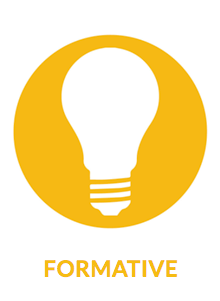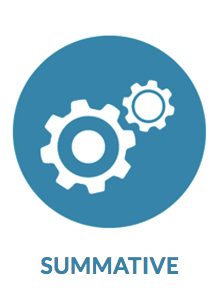Digitally-Supported Assessment
REDEFINING ASSESSMENT
Educators use a variety of methods and tools to measure students' learning. Whether pop quizzes or performance tasks, each method of assessment is best suited for measuring certain aspects of learning and gathering certain types of data.
Traditional methods of assessment, such as closed choice questions or written exams, can be implemented on paper or digitally. Digitally-supported assessments of this type may: increase accessibility options; enhance data collection and analysis with auto-grading capabilities; provide analytics by overall score, question, or objective; and gather data about other aspects like time spent or the number of attempts taken by a student.
Alternative assessment methods—such as performance tasks, projects, artistic performances, portfolios, and other authentic assessments—give students a chance to apply their knowledge to simulated and real world problems. These assessments showcase the breadth of students' learning and talents. Digitally supported assessments of this type give students multimedia tools for creative demonstrations of mastery, tracking performance-based progress over multiple years, and access to an audience of their peers, parents, and global community.
Diagnostic assessments are pre-assessments that give you an indication of a student's strengths and weaknesses regarding specific knowledge or skills.
Diagnostic data should be used to gauge students' prior knowledge and misconceptions before teaching a lesson, unit, or course.
Benefits of digitally-supported diagnostic assessments may include:
- auto-grade capabilities
- adaptive questions that assess levels in less time
- immediate feedback for teachers, students, or other stakeholders
- identification of root causes behind academic challenges
- the integration of this baseline data into a tracking system to monitor student learning throughout the lesson, unit, or course.
Example: iReady Adaptive Diagnostic

Formative assessments are evaluations given throughout the learning process to monitor students' progress. This may include exit tickets, clicker questions, or mid-unit quizzes.
Formative data should be used to gauge learning and inform instructional decisions throughout a lesson or unit. These low stakes assessments allow educators to identify target areas of need and address those areas immediately.
Benefits of digitally-supported formative assessments may include:
- auto-grade capabilities
- more seamless integration into the learning experience
- real time data on students' learning
- timely data to inform personalized instruction for students
- the ability to connect the result to customized instructional materials
Examples: Socrative ; Khan Academy

Summative assessments evaluate the level of students' learning and mastery at the end of a instructional period, such as a unit, term, or course. This may include standardized tests, chapter tests, or final projects.
Summative data should be used to gauge comprehensive achievement and, in conjunction with diagnostic data, growth of students' knowledge and skills. These data are critical for identifying the broader need for changes to teaching approaches, curriculum design, and implementation.
Benefits of digitally-supported summative assessments may include:
- auto-grade capabilities
- adaptive questions that assess levels in less time
- increased availability of and functionalities for alternative assessment methods
- interactive rubrics for self, peer, and teacher evaluations
- improved analytics for aggregate and disaggregate data to identify performance trends in student populations and sub-populations
- multi-year tracking capabilities
Example: Digital Portfolios
